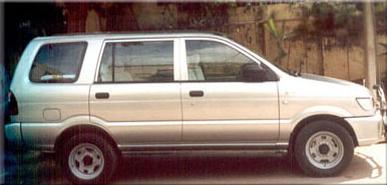|
When Kumbha ascended
the throne, Malwa had attained considerable power under Mahmud
Khalji I- Malwa was now in a position to offer shelter to those
who has some grievance or other against the state. Thus Mahapa
Panwar and Ekka were received with open arms by the Government
of Malwa. Similarly Rawat Chunda, the elder brother of Maharana
Mokal, had also repaired to the court of Mandu where the Sultan
hnoured him by giving the district of Halla as jagir for his
maintenance. The rising power of Malwa naturally did not look
favourably towards the Rana’s assertion of suzerainty over
Haroti, Mandasor, Gargon and other Rajput principalities of the
border, which had once acknowledged the authority of Malwa.
Moreover, Kumbha’s act of garrisoning of his frontier outposts
was viewed with suspicion. Further, a promise by the to help
Umar Khan against Mahamud Khalji was taken as an indication of
hostile intentions of the Rana towards the Sultan.
The rulers of both kingdoms made no secret of their ambitions
and were in search of some pretext for open hostility. The
opportunity came when the Rana made a demand for the person of
Mahapa Panwar, one of the assassin of Mokal, who had sought
shelter with the Sultan Mahmud. Thinking that Mewar was in a
state of turmoil, the Sultan declined to surrender the refugee,
and this refusal was taken as a signal for war. Immediately both
armies moved forward and met in 1437 near Sarangpur, and a
severe engagement ended in the utter rout of the Sultan’s
forces. According to Rajasthani bardic tradition, which find
confirmation in Ranakpur and Kumbhalgarh inscriptions, the Rana
towards the Sultan.
The rulers of both kingdoms made no secret of their ambitions
and were in search of some pretext for open hostility. The
opportunity came when the Rana made a demand for the person of
Mahapa Panwar, one of the assasins of Mokal, who had sought
shelter with the Sultan Mahmud. Thinking that Mewar was in a
state of turmoil, the Sultan declined to surrender the refugee,
and this refusal was taken as a signal for war. Immediately both
armies moved forward and met in 1437 near Sarangpur, and a
severe engagement ended in the utter rout of the Sultan’s
forces. According to Rajasthani bardic tradition, which find
confirmation in Ranakpur and Kumbhalgarh inscriptions, the Rana
burnt down Sarangpur, captured countless captives, laid siege to
Mandu and carried Mahmud as prisoner of war to Chitor. In
commemoration of this victory he is said to have erected the
triumphal pillar Jai Stambha in the fort of Chittor.
Mahmud Khalji was kept a prisoner for a period of six months,
after which on account of the Rana’s generosity, he was sent
back to his kingdom. Regarding this victory and generosity, Col.
Tod says, “Abul Fazi relates this victory and dilates of
Kumbha’s greatness of soul in setting his enemy at liberty, not
only without ransom but with gift. Such is the character of
Hindu, a mixture of arrogance, political blindness, pride and
generosity. To spare a prostrate foe is the creed of the Hindu
cavalier and he carries all such maxims to excess.”
Shri Sarda also comments on this victory as, “Political
blindness and misplaced generosity on the part of Hindus, often
illustrated in the history of India, has been the cause of their
political downfall. The Rajput ideal of life was ‘how to die
nobly’ rather than how to achieve success in life. They
preferred fame to success, and cared lees for victory and more
for praise of their personal valour. The repeated attempts made
by Sultan Mahmud Khalji of Malwa by invading Mewar to obtain a
victory over Maharana Kumbha, shows that Kumbha’s release of
Mahmudji Khalji was a piece of political folly, almost a crime.”
But, in fact, the Rana acted wisely as it was not possible for
him to keep control over Malwa for a longer time- the resources
of Mewar too did not favour the occupation of the region which
was so far off from Chittor. The release of the Sultan at least
provided a breathing gap to the Rana who very usefully employed
the time in erecting several forts and generally strengthening
the defense of his country, facing the border of Malwa and
Gujarat These forts successfully defended Mewar against
subsequent attacks made by the Sultans of Malwa and Gujarat.
When Mewar was facing some internal disorder due to the murder
of Ranmal and faction fights of Khem Karan, the brother of the
Rana, the Sultan Mahmud marched against Mewar in 1442. He led
his first attack on the fort of Kumbhalgarh, which was repulsed
by a stubborn resistance of the Rajputs. He them directed his
assault on the temple of Banmata, which was situated at the foot
of the hill. This temple was the first defense line under the
leadership of Dip Singh. After seven days the leader and his
followers fell and the temple was razed to the ground. With an
orthodox fury the idol was burnt to ashes – from here the Sultan
moved to Chitor; but he could not capture the fort ad soon had
to return to his capital after sustaining heavy losses.
To avenge the losses incurred during the courses of the
expeditions, the Sultan adopted a plan of attacking border areas
first and then attempting the occupation of the areas which were
under the Rana’s political influence. He forced the Khichis of
Garaun, to surrender the fort. Two years later, the fort of
Ranthambhor was also occupied. His attack of 1455 resulted in
the crushing defeat of Gajadhar, governor of Ajmer. Saif Khan
was posted there as Governor on behalf of Malwa. In 1457 the
Sultan attacked Mandalgarh and succeeded in capturing the
fortress. As was the practice with the inarching army of the
Muslims, temples were broken and mosques ministration of the
conquered part in the hands of his own men and returned. |







